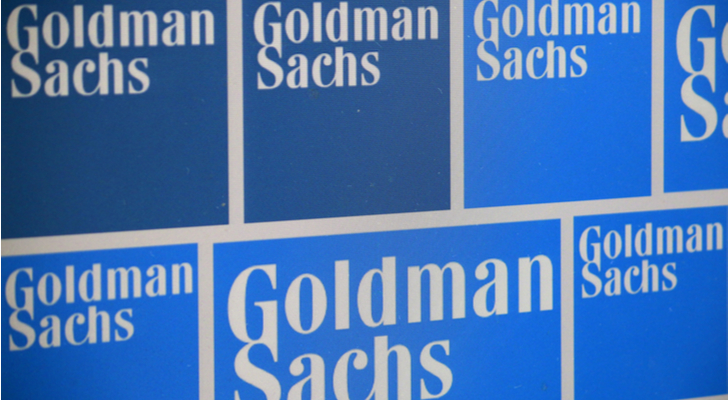Never let it be said that newly named Goldman Sachs (NYSE:GS) CEO-elect David Solomon is taking a passive approach to management. Even before taking the helm he has named a new co-head of the company’s trading division. Jim Esposito will join Ashok Varadhan as leaders of the investment bank’s trading arm.
Owners of GS stock who’ve paid close attention to the company’s results should be thrilled. Not that Esposito has a magic touch or that Varadhan is failing, but Goldman’s trading arm has been something of a thorn in the company’s paw for a while now. A change — any change — is at least a step in the right direction.
GS Stock: Trading Trouble
Last quarter’s earnings were solid enough. Revenue of $9.4 billion and earnings of $5.98-per-share were both better than expected, the pros were calling income of $4.66-per-share of GS stock and a top line of $9.4 billion. Sales were up 19% year-over-year.
Trading, however, was a weak spot.
It wasn’t bad, to be clear. Equities trading was flat year-over-year, and fixed-income trading revenue of $1.68 was a bit better than the $1.65 billion analysts had been modeling. Stock trading revenue fell short of expectations though, and bond trading was being compared to a weak Q2-2017 revenue tally.
Rival JPMorgan (NYSE:JPM) didn’t bump into the same trading headwind in the second quarter, however. Neither did Bank of America
(NYSE:BAC). Autonomous Research’s analyst Guy Moszkowski bluntly but accurately commented on Goldman Sachs’ results, “In the equities business, the fact is, you were flat year over year in the second quarter, at a time when your peer group that has reported so far were up on average 20 percent.”
If it was a one-time shortcoming, it would be forgivable. It wasn’t a one-time thing though. While trading looked better in the first quarter of the year, the fourth quarter’s trading action was tepid, as was the third quarter’s of last year.
To the Rescue?
Solomon, and now Esposito, along with Varadhan clearly have their work cut out for them. The question is, are Solomon and/or Esposito the missing part of the chemistry Goldman needs, and the missing piece of the puzzle that’s vexed owners of GS stock for too long now?
It’s a definite maybe.
Solomon, currently the company’s only President (making him something of the heir-apparent to the CEO position), earned his stripes the hard way, and the good way. Joining the company in 1999 as in investment banker — and staying in that lane on the way up — makes him something of an outlier as a Goldman chief. Most of them came from the trading side of the business.
That background is something of a liability, at least according to some.
What Solomon may lack in terms of a trading background, however, he may more than make up for in other ways. As Alan Schwartz, former CEO of Bear Stearns, commented in 2011 when Blankfein was first rumored to have one foot out the door “… what differentiates David from a lot of bankers is he’s a great leader and manager. A lot of people are just practitioners, but he knows how to inspire, manage and lead other professionals.”
Then there’s Jim Esposito.
Esposito is currently the Co-Chief Operating Officer of Goldman’s Fixed Income, Currencies and Commodities arm, though he was formerly the Chief Strategy Officer of the Securities Division. He got his start with Goldman Sachs, though, as an emerging markets debt salesperson.
It’s certainly not a bad pedigree to have, even if not exactly at the exact center of the heart of the company’s trading business.
Bottom Line for GS Stock
Although it remains to be seen just how effective the new management structure will be in terms of rekindling the company’s once-great trading business — the only persistent problem area — GS stock holders can take some solace in the fact that if anybody can inject growth into this arm, this pair of managers is as well-equipped to do the job as any could be. Blankfein, though clearly a capable leader, never seemed quite as equipped to grow this one sliver of the business.
It won’t be easy or quick, to be clear. It’s a project that could take several quarters to complete and start yielding tangible results. It’s the most hope shareholders have seen on this front for too long though, and may well be a reason for investors to put GS stock back on their watchlist.
As of this writing, James Brumley did not hold a position in any of the aforementioned securities. You can follow him on Twitter, at @jbrumley.

